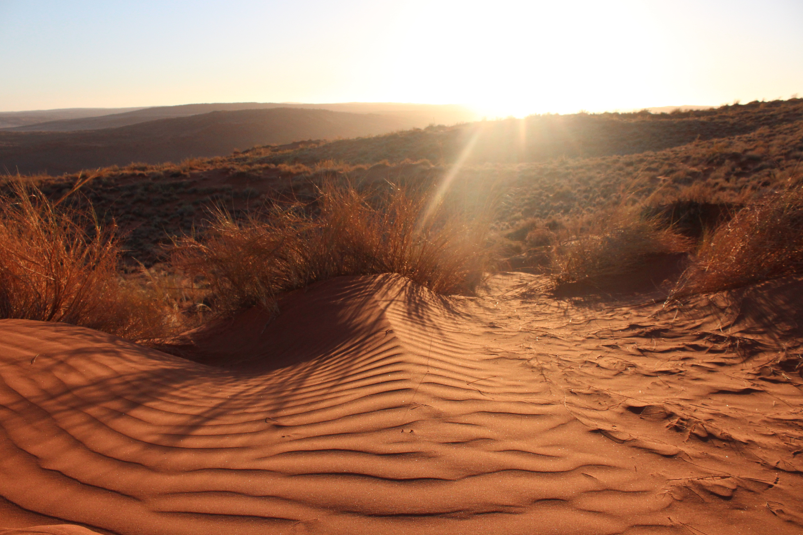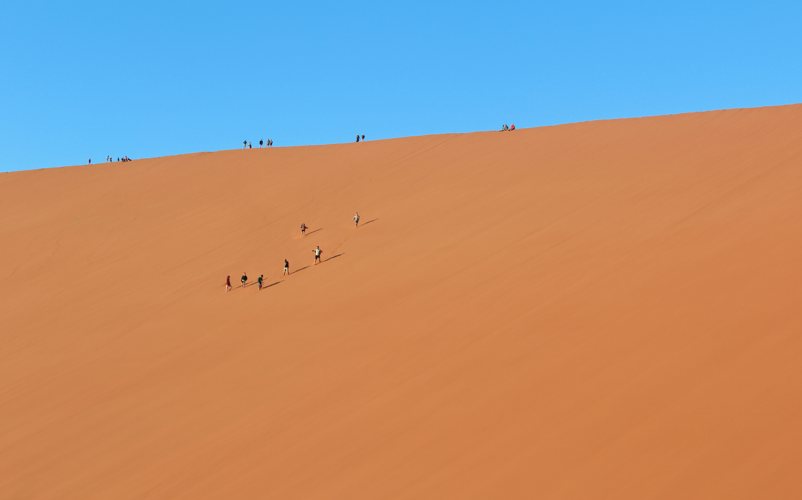
Think of the desert.
For me, I typically imagine dry, barren and dead masses of land with maybe a few camels roaming around. Essentially, I pictured a lifeless landscape – far from what I would consider a travel destination.
Naturally, I assumed this is what I would experience while camping in the Namib Desert, but when I arrived in Sossusvlei after a five-hour drive from Walvis Bay, my assumptions of the desert were completely shattered.

After sleeping a night under a seemingly endless sky of stars, I woke up to hike Dune 45 for sunrise. As I made my way up the giant dune, I learned that A) sand dunes are extremely difficult to climb and B) the desert is anything but empty.
I had soft, red sand under my feet, the setting moon to my right, the rising sun to my left, and a deep blue sky above me. The most breathtaking scenery I’ve ever experienced dispelled every preconceived notion I had made about the desert.
The next few days I spent hiking massive dunes and watching the sun rise and set over the desert sands.
I also explored Deadvlei, which is a clay pan that once held shallow pools of water that allowed acacia trees to grow. Drought eventually struck the area, causing the trees to die.
However, the trees have not decomposed due to the dry climate and the desert sun, which has scorched the estimated 900-year-old trees black.
I figured the best way to relay the desert I saw, while traveling with Semester at Sea, would be through pictures. Trust me – it looks better in real life!
All photos were taken by yours truly.












